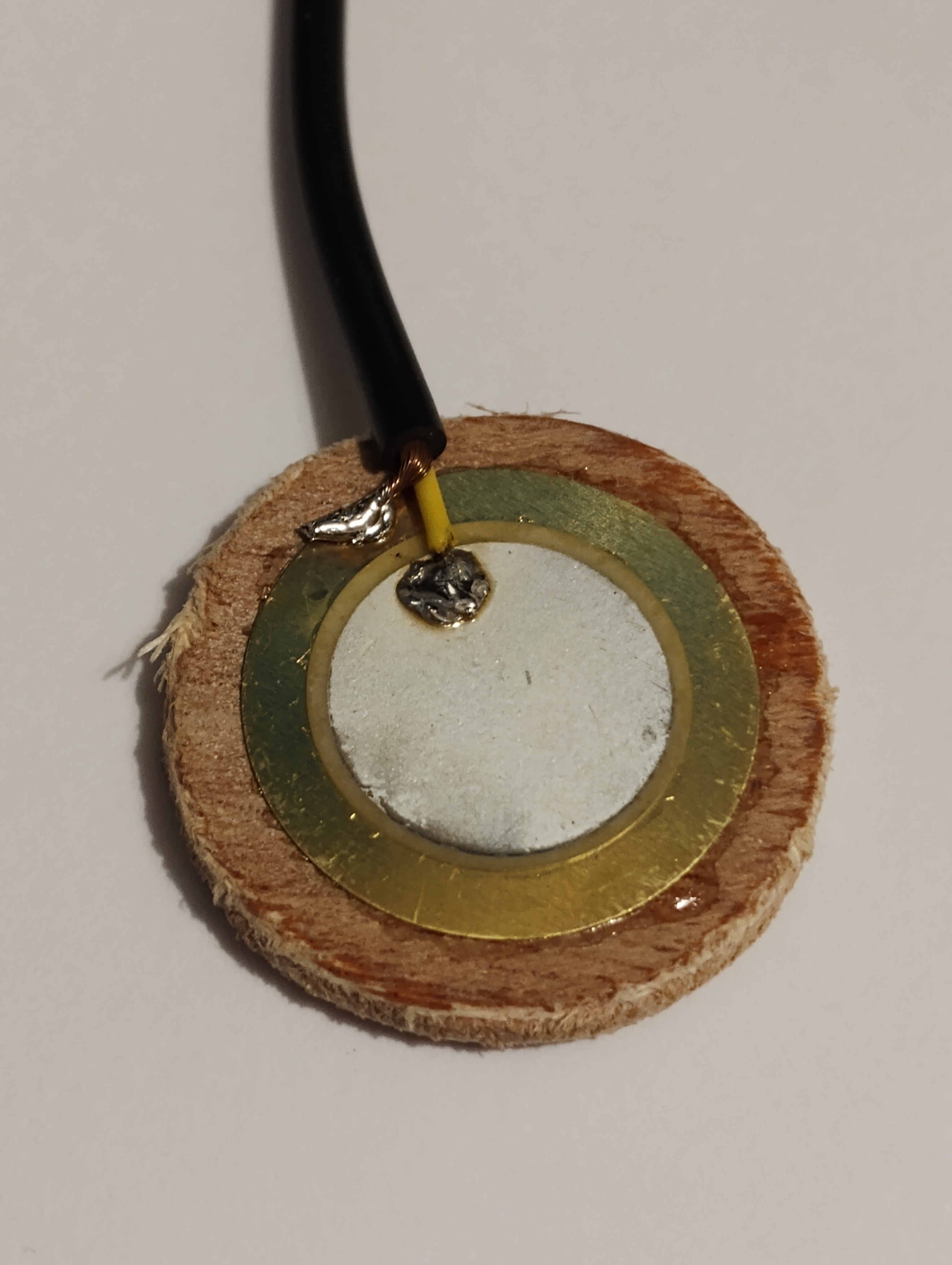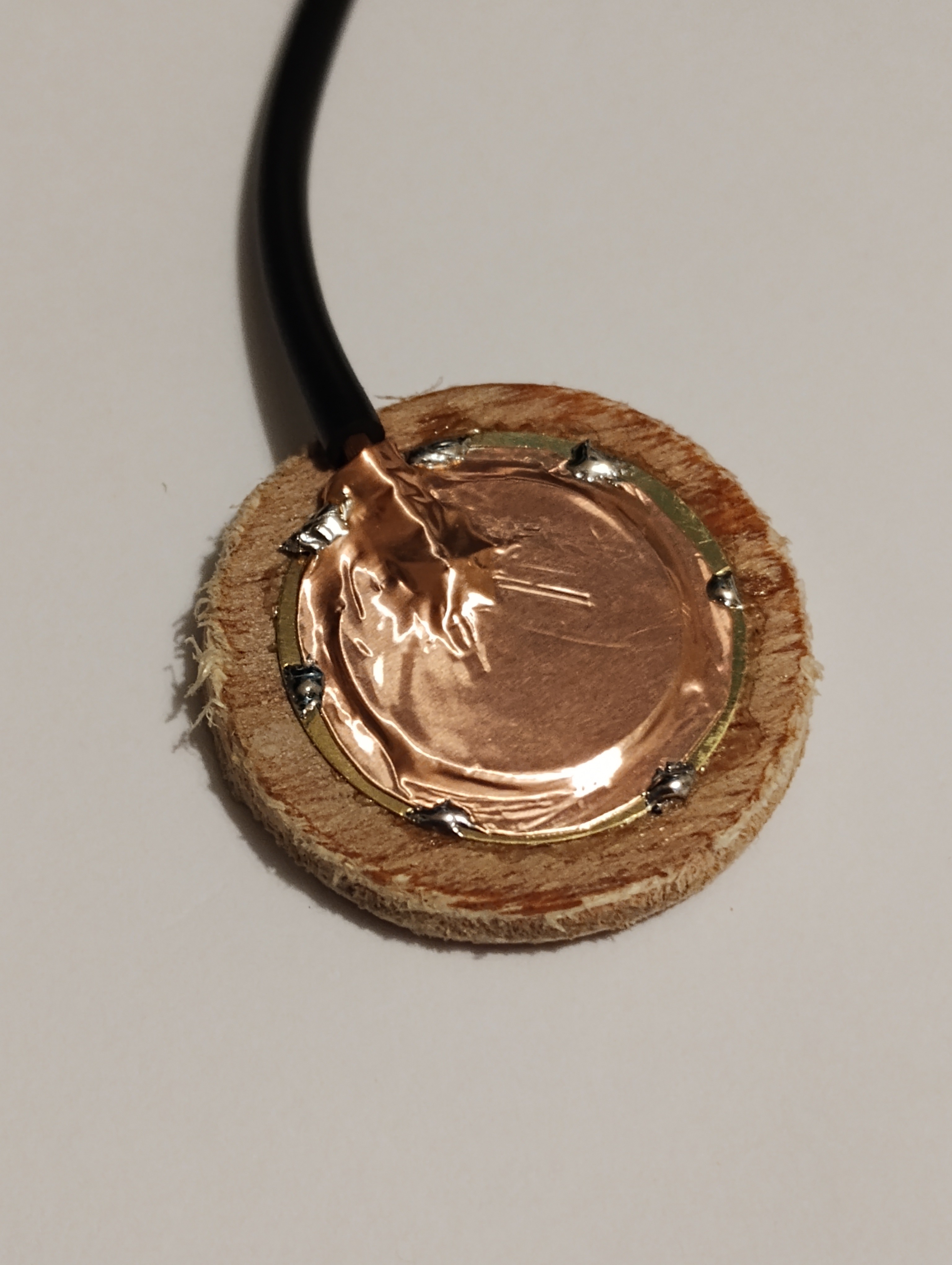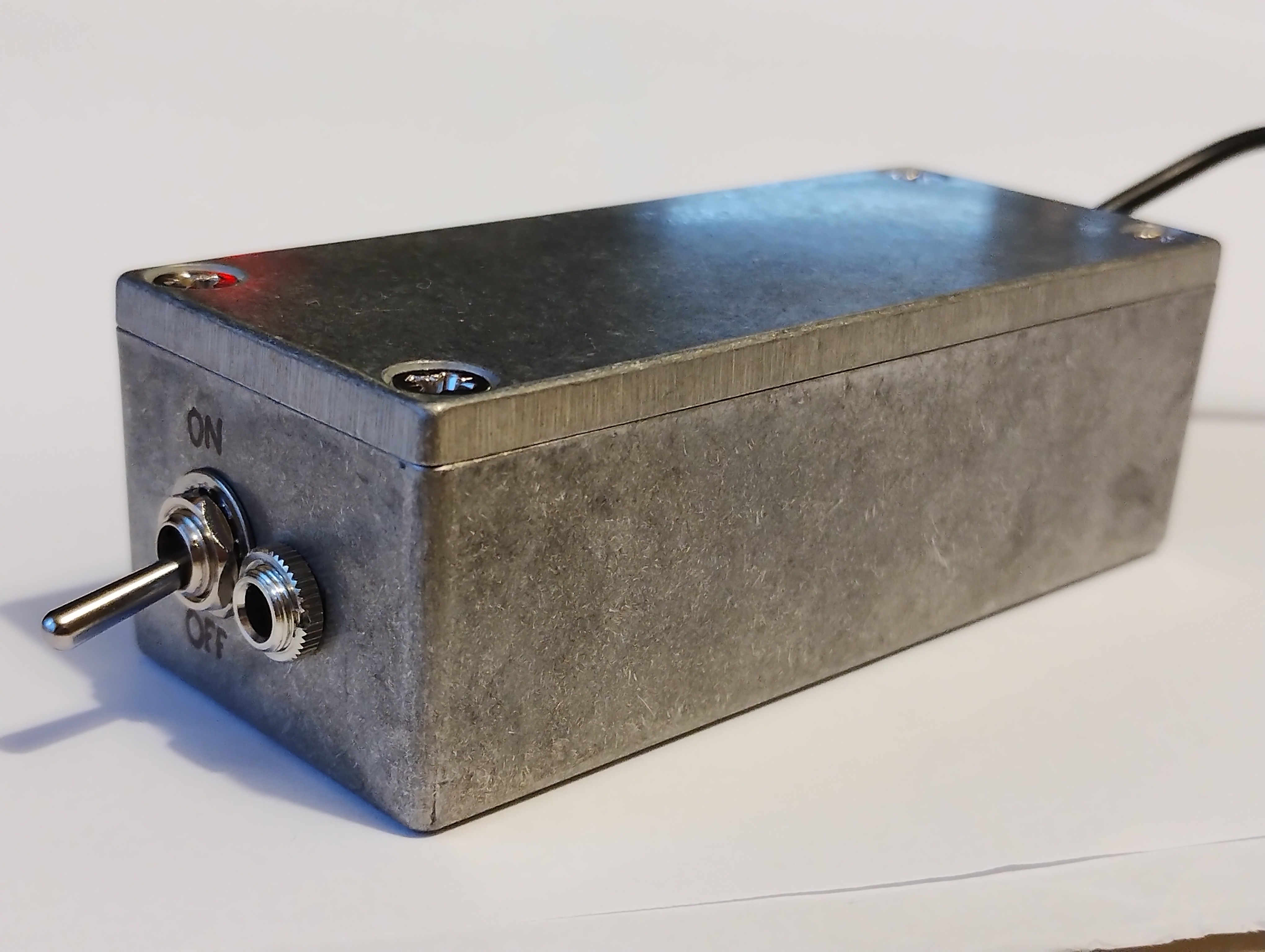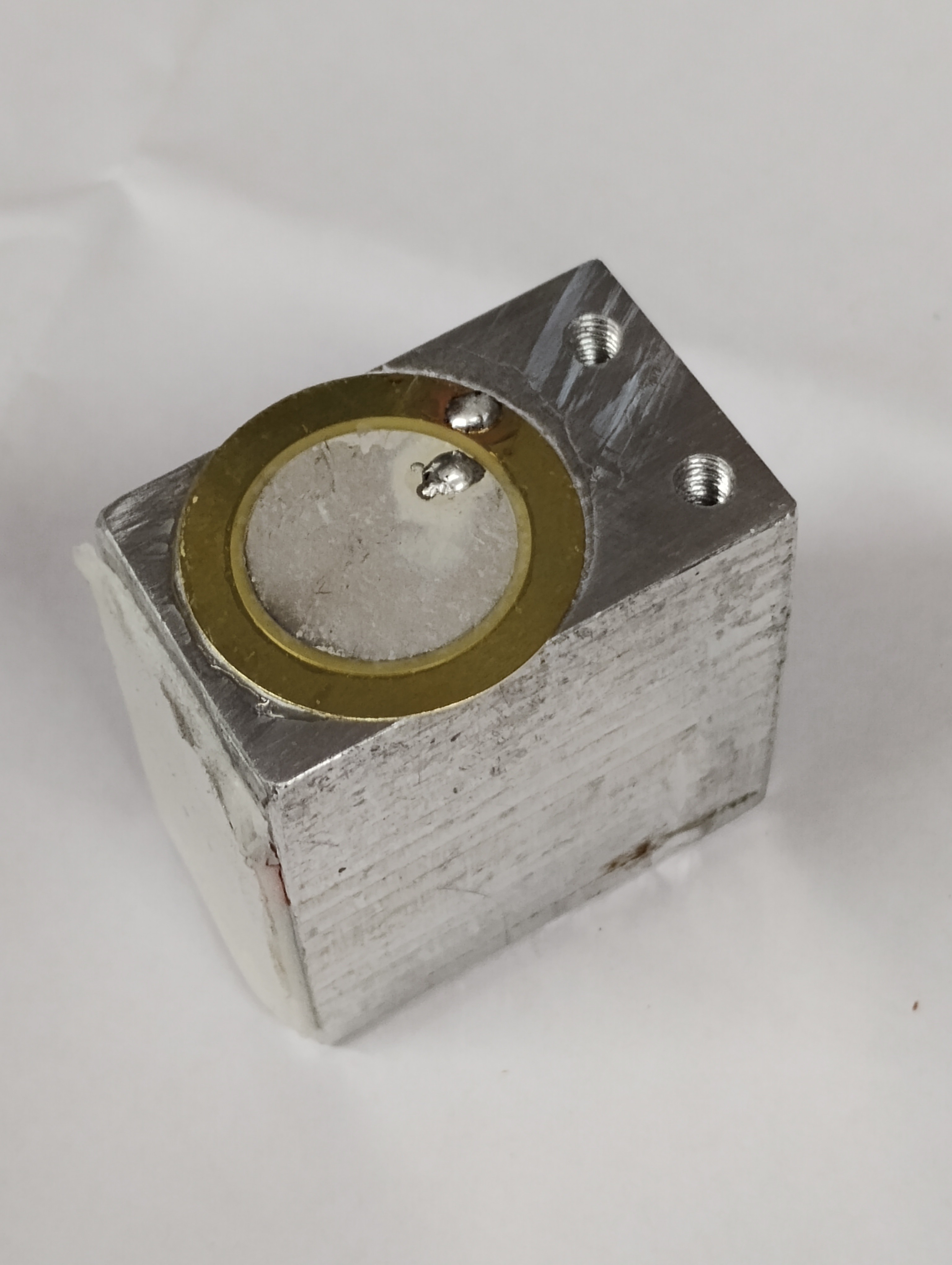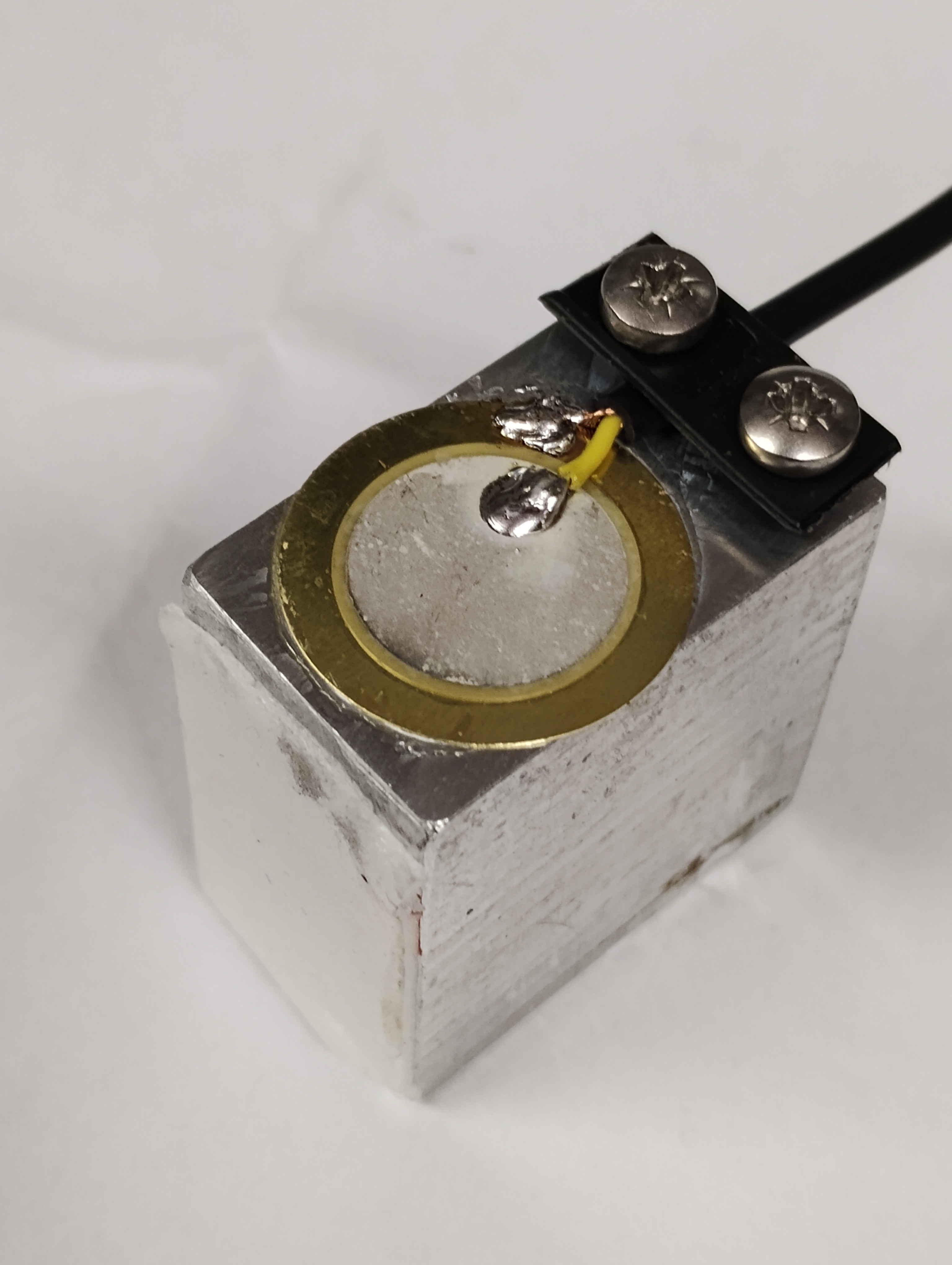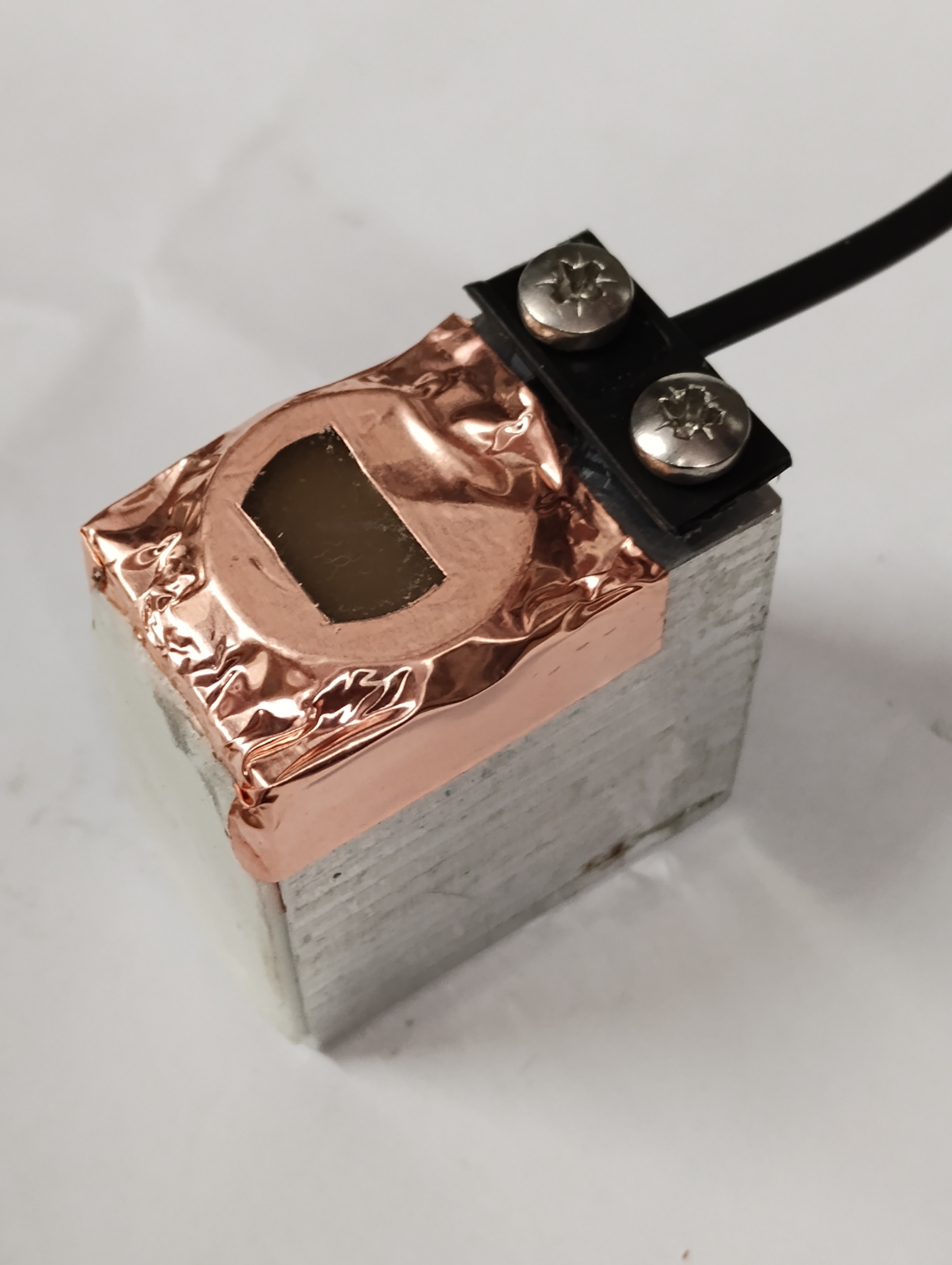-
A better sensor...
11/27/2022 at 16:06 • 0 commentsThe piezo-strapped-to-a-heavy-block approach didn't work very well. It was surprisingly quiet, and I struggled to get anything out of my quietest (most expensive) watch. A bit of research, and the general consensus seems to be that adding mass broadens the frequency response at the cost of sensitivity. So, with that in mind, I made a version 2: instead of a heavy aluminium lump, a small piece of 4mm plywood. Stiff enough to give the fragile element some much-needed mechanical support, but light enough not to hammer the sensitivity. Also, a bit 'soggy' to help dampen any resonances.
First, superglue the element to a circle of ply. I used a 25mm hole-saw with the centre drill removed. Solder the connections to some screened cable.
![]()
Apply some tape (I used Kapton) to cover just the centre electrode - leave the brass base exposed.
![]()
Cover with copper tape, then trim back to leave just a little of the brass base showing. Tack solder in a few places to make a good shield against stray interference.
![]()
Finally a dot more glue to keep the cable in place and give it some strain relief. There's a new .stl file for the main body of the holder, which has an upright portion that you can glue the mic assembly to.
-
Make a pre-amp
11/27/2022 at 15:57 • 2 commentsPiezo transducers like the one we're using have a very high impedance output and therefore need a high-impedance input preamplifier in order to drive line inputs (or headphones). Also, the sounds we're trying to capture are very quiet so we also need some gain.
(see files for the LTSpice model) I built this basic circuit on veroboard and put it in a metal box. I actually used a TLC271CP opamp, but I don't think it matters much. It has a gain of 1000x, and a high-pass to try to cut mains hum and lower harmonics, without really affecting the 'tick tock' sounds.
![]()
I can't stress enough the need for screened cable on the input, and a metal box, to keep out mains hum - nothing else comes close!
I tried connecting this circuit to my Motorola smart phone (via a 4-pin 'TRRS' plug) and it kinda worked, but was defeated by poor software! The phone kept insisting it used the built-in mic every now and then, and I had to keep unplugging and replugging to force it to use the external mic instead. Very annoying, so in the end I gave up and used a 3-pin 'TRS' plug, aka regular headphone jack, to plug into my PC. Besides, the TG software is much better than any of the Android apps I tried. More later...
-
Assemble the microphone
11/16/2022 at 18:09 • 0 commentsFashion a lump of something heavy into a block with a flat, smooth face. Glue a piezo transducer to the block - this one is a cheap 20mm diameter type. I've drilled and tapped a couple of screw holes in the block for later...
![]()
Solder a length of screened wire to the piezo transducer, and clamp the wire for strain relief - the piezo element's metallisation is extremely fragile and easy to rip off.
![]()
Make a thin piece of something hard but electrically-insulating into a disc, and glue it on top of the piezo element. I used a spare piece of FR4 circuit board. Cover the exposed solder joint in tape.
![]()
Wrap in copper tape for shielding purposes. Ideally also solder the copper tape to the screen of the wire if possible.
![]()
External mic for phone timegrapher app
Checking the timing of a mechanical watch using a phone app is easy, but you need an external microphone.
